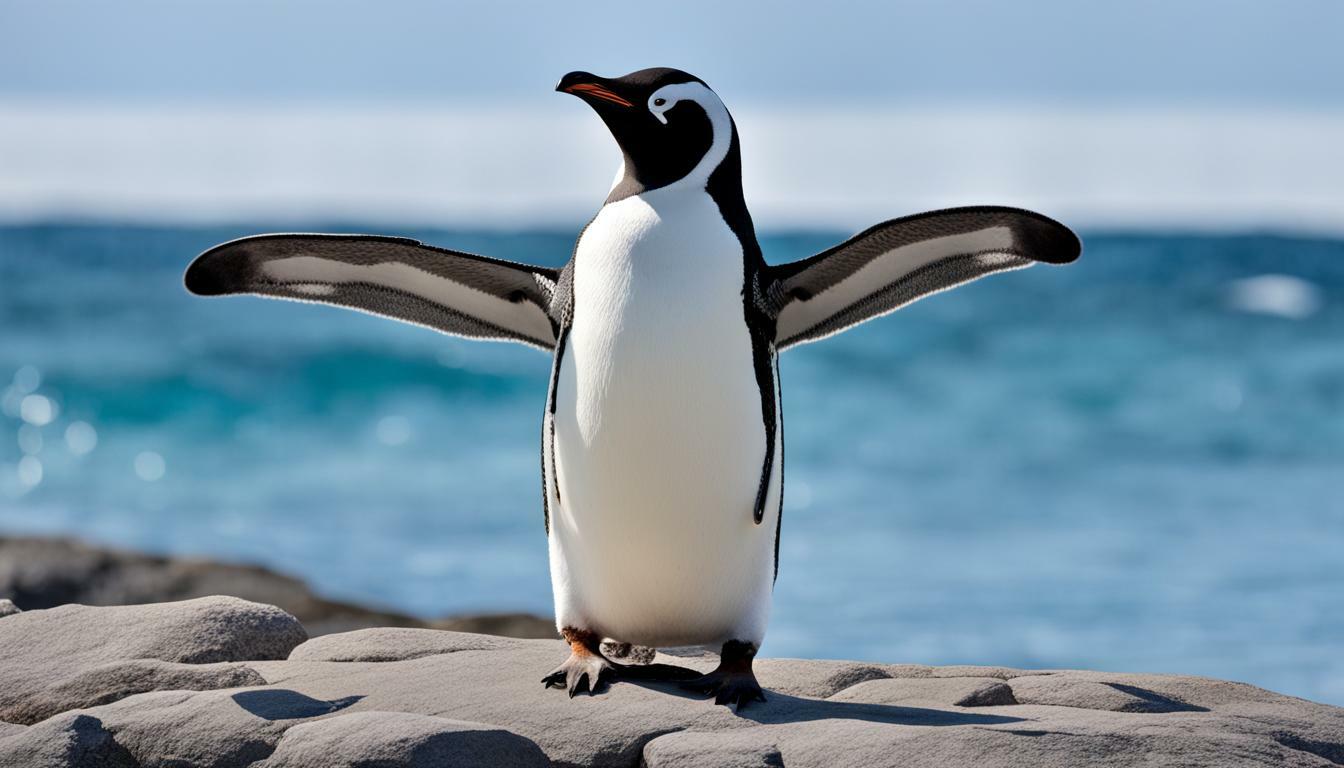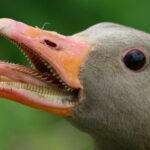Have you ever wondered if penguins have wings? Despite being classified as birds, penguins are unique in their adaptations for living in the water. In this article, we’ll explore the characteristics of penguins that contribute to their flightlessness and answer the question of whether they have wings.
Penguins have evolved differently from other birds due to their aquatic lifestyle. While they do have wings, these wings have adapted to provide more efficient swimming rather than flying capabilities. Penguin wings are flippers, which they use to propel themselves through the water in a flying motion.
In addition to their flippers, penguins have a unique feather structure that provides insulation and buoyancy. These feathers are tightly packed and overlap, forming a waterproof barrier that keeps the penguin dry and warm while swimming.
It’s important to note that not all penguins are the same, and wing structure can vary among different species. Some penguins, such as the emperor penguin, have smaller wings that are less adapted for swimming, while others, such as the Adelie penguin, have longer wings that provide more efficient swimming abilities.
Key Takeaways
- Penguins do have wings, but they are adapted for swimming rather than flying.
- Penguin wings are actually flippers that help them glide through the water.
- Penguins’ unique feather structure provides them with insulation and buoyancy while swimming.
Understanding Penguin Anatomy and Adaptations
Despite their cute and cuddly appearance, penguins are fascinating creatures with unique adaptations that have allowed them to thrive in their harsh environments. One of the most significant adaptations of penguins is their anatomy, which has contributed to their evolution into flightless birds.
Physical Characteristics
Penguins have a streamlined body shape and are covered in a layer of waterproof feathers that insulates them against the cold. These feathers are tightly packed together and overlap like shingles on a roof, creating a smooth surface that reduces drag when swimming in water.
Unlike other birds, penguins have heavy, solid bones that help them to dive deep underwater. Their wings have evolved into flippers, which are short, broad, and stiff, ideal for propulsion in water. The bones of the flipper are similar in structure to the wings of other birds, but they lack the necessary adaptations for lift and sustained flight. Penguins also have strong legs and webbed feet, which they use to steer and brake while swimming.
Unique Swimming Ability
The flippers of penguins are covered in small, scale-like feathers, which enhance their ability to swim. The feathers create a strong current of water that flows over the flippers, increasing their maneuverability and control. Penguins can dive to depths of up to 500 feet and stay underwater for several minutes. Their remarkable swimming ability has given them a competitive advantage when hunting for food in their aquatic habitats.
Evolutionary Adaptations
Over millions of years, penguins have evolved to adapt to their unique environments. Their inability to fly is one such adaptation that has allowed them to become effective swimmers. Without the need for flight, penguins have been able to develop a streamlined body shape and specialized flippers that optimize their swimming ability. These adaptations have also allowed penguins to conserve energy, as they do not need to constantly flap their wings or expend energy in flight.
In conclusion, understanding the anatomy and adaptations of penguins provides insight into their unique abilities and survival strategies. Despite their inability to fly, penguins have evolved to thrive in their aquatic habitats, and their fascinating adaptations continue to captivate scientists and nature enthusiasts alike.
Debunking the Myth of Flying Penguins
You may have heard the amusing urban legend of the flightless penguin that suddenly learns how to fly. Unfortunately, this myth is just that – a myth. Penguins are unique among birds in that they have evolved a specialization for swimming and diving rather than flight.
While some penguin species may have long wings that resemble those of typical flying birds, these wings have adapted into flippers that help them navigate and maneuver in water. The bones in their wings are short and stout, reducing the amount of lift they can generate for flying. Additionally, their feathers are tightly packed and help them maintain body heat while swimming, but they do not provide sufficient air resistance for flight.
Scientists have conducted studies on penguin wings and have concluded that, based on the anatomy and biomechanics of their wings, it is highly unlikely that penguins could ever fly. Even if they could generate enough lift to take off, their body weight would make sustained flight impossible.
So, while the image of a flying penguin is amusing, it is simply not possible based on scientific evidence. Penguins are unique and fascinating birds that have evolved to thrive in their aquatic environments without the need for wings. Their adaptations for swimming and diving have allowed them to become expert hunters and survivors in some of the harshest environments on Earth.
The Importance of Wings for Penguins
While many bird species rely heavily on their wings for survival, penguins have developed unique adaptations to thrive in their aquatic environments without them. Unlike most birds, penguins have evolved to be exceptional swimmers, with wings that have become flipper-like appendages, perfectly suited to propelling them through water.
While the wings of flying birds are covered in lightweight feathers that allow them to achieve lift when flapping, penguin feathers are much denser and more waterproof, designed to trap a layer of insulating air close to the body, keeping them warm in the frigid waters they inhabit. Their bones are also solid, rather than hollow, providing added weight and stability for diving and swimming.
Although penguins cannot fly, their wings still serve important purposes. In addition to swimming, penguins use their wings to help balance and steer themselves as they propel their bodies through the water at high speeds. They also use their wings to communicate with other penguins and court potential mates.
So while penguins may not have the ability to soar through the skies like other birds, their unique adaptations have allowed them to thrive in some of the harshest environments on earth. By evolving to become superb swimmers, penguins have become one of the most fascinating and beloved bird species in the world.
The Conclusion: Do Penguins Have Wings?
After exploring the anatomy and adaptations of penguins, as well as debunking the myth of flying penguins, we can definitively answer the question: no, penguins do not have wings. While penguins do have flippers that resemble wings, they lack the necessary adaptations that enable true flight in birds.
Despite their inability to fly, penguins have evolved remarkable adaptations to thrive in their harsh aquatic environments. Their streamlined bodies, dense feathers, and strong flippers allow them to swim and maneuver with incredible speed and agility.
So, while wings are important for many bird species to fly, penguins have found success and survival without them. The unique adaptations of penguins have allowed them to become one of the most iconic and beloved animals on the planet.
In conclusion, we hope this article has provided valuable insights into the world of penguins and answered the burning question of whether they have wings. Thank you for reading and exploring the fascinating world of these flightless birds.
Do Penguins Have Tails Like They Have Wings?
The penguins’ tail anatomy revealed showcases an interesting fact: while penguins have wings to swim through the water, they do not possess a tail like most birds. Instead, their tail bones are fused, forming a structure known as the pygostyle. This adaptation helps penguins maintain balance while navigating the icy waters and diving for food.
FAQ
Q: Do penguins have wings?
A: No, penguins do not have wings. While they have flippers that resemble wings, these are adapted for swimming rather than flight.
Q: What are the adaptations and characteristics of penguins related to wings?
A: Penguins have modified wings called flippers that are designed for efficient swimming underwater. Their wings are short, stout, and covered in stiff feathers to help them navigate through water.
Q: Can penguins fly?
A: No, penguins are flightless birds. Their wings have evolved for swimming rather than flying, and they have lost the ability to take flight.
Q: Why is the idea of flying penguins a myth?
A: The idea of flying penguins is a myth because penguins are anatomically adapted for a life in the water. Their heavy bodies, short wings, and dense bones make flying impossible.
Q: Are wings important for penguins?
A: While wings are vital for other bird species to fly, penguins have adapted to their aquatic lifestyle without wings. Their flippers are key for efficient swimming, diving, and maneuvering underwater.










